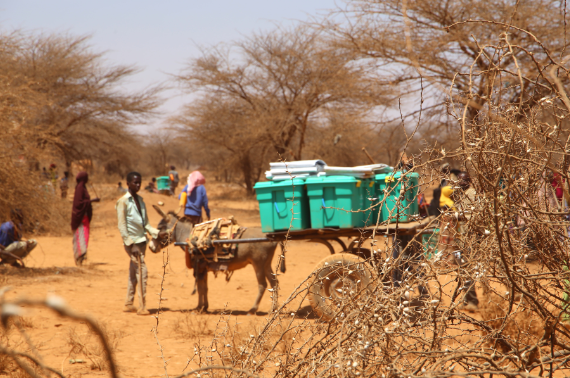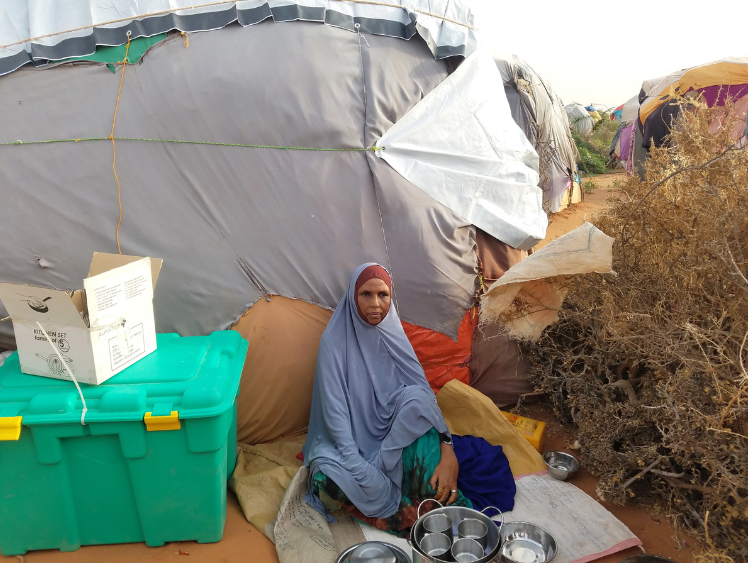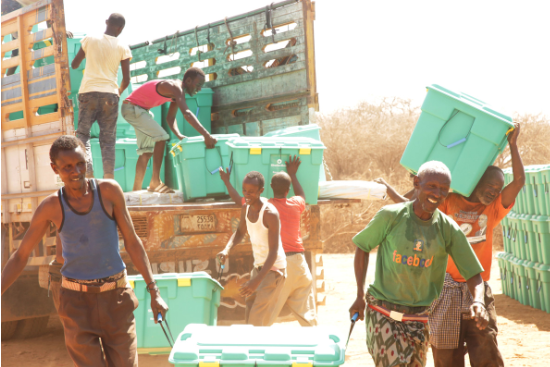Unlike a tropical storm or a wildfire, a drought is a creeping disaster. It slowly takes its toll on an area, until it becomes just as destructive as any climate-related disaster.
Droughts have affected more people in the last four decades than any other disaster. But what are they? What causes them? And what impact are they having on vulnerable people around the world?
ShelterBox has supported communities affected by droughts in countries like Somaliland and Kenya. And now, as the worst drought in forty years tightens it grip on East Africa, we are providing emergency shelter aid to 13,000 displaced people in Ethiopia.
Read more to learn about droughts and how we support people facing them head on.
WHAT IS A DROUGHT?

3 DIFFERENT TYPES
A drought is a result of decreased moisture in a specific region over a long period of time. There are three different types:
Meteorological droughts. They are caused when there is a shortage of rainfall in a region. This leads to the dry, cracked earth that many of us think of when we hear the word ‘drought’.
Hydrological droughts. They are similarly caused by the lack of rainfall, which in turn has an impact on water supplies. This results to a severe decline in stream flows, lake levels, and groundwater tables.
Agricultural droughts refer to the impact on crops. It’s a result of rainfall and soil water shortages, reduced groundwater, and low reservoir levels for irrigation.
WHAT CAUSES DROUGHTS?
Historically, droughts are a natural phenomenon.
But human activity is having a growing impact on their likelihood, intensity, and duration.
Climate Change
People are driving climate change, which in turn is causing more droughts. Rising temperatures are increasing the rate at which water is being evaporated. For regions that are already more arid, this can lead to disaster.
Moreover, climate change can shift storms away from their typical paths. This could remove any chance of the region receiving the moisture it needs.
Water Demand
The demand on our water supply is growing every year. Drinking water and intensive farming are pulling large amounts of water from lakes, rivers, and groundwater. Therefore, this puts a huge strain on water resources. If this strain becomes too much, it reaches a tipping point, and drought conditions take hold. Once this happens, it can take years to replenish water resources, if it happens at all.
Deforestation and Soil Degradation
Plants and trees aren’t only needed to capture carbon and release oxygen. They are also vital in releasing moisture back into the atmosphere. Without them, the water cycle breaks, and entire regions become more vulnerable to drought. It can further diminish soil quality, reducing the land’s ability to retain water.
WHAT ARE THE EFFECTS OF DROUGHTS?

Droughts affect millions of people every year. The numbers are only expected to increase as global temperatures continue to rise.
Already, it’s estimated that 55 million people suffer its impacts every year. When a drought occurs, crops fail and livestock can perish. As a result, entire communities can experience severe malnutrition or famine.
In addition, there is an increased risk of infectious diseases, such as cholera, due to lack of water and sanitation.
In order to escape these conditions, tens of thousands of families leave their homes behind in search of food and water.
DROUGHT IN EAST AFRICA

The Horn of Africa is facing its worst drought in more than forty years.
Across East Africa, almost 20 million people have been affected by the drought. More than one million people are displaced, and many of them are on the move as they desperately search for food.
ShelterBox is responding. We’re providing tarpaulins, rope, and other essential items to help thousands of people build temporary shelter in the Somali region of Ethiopia.
